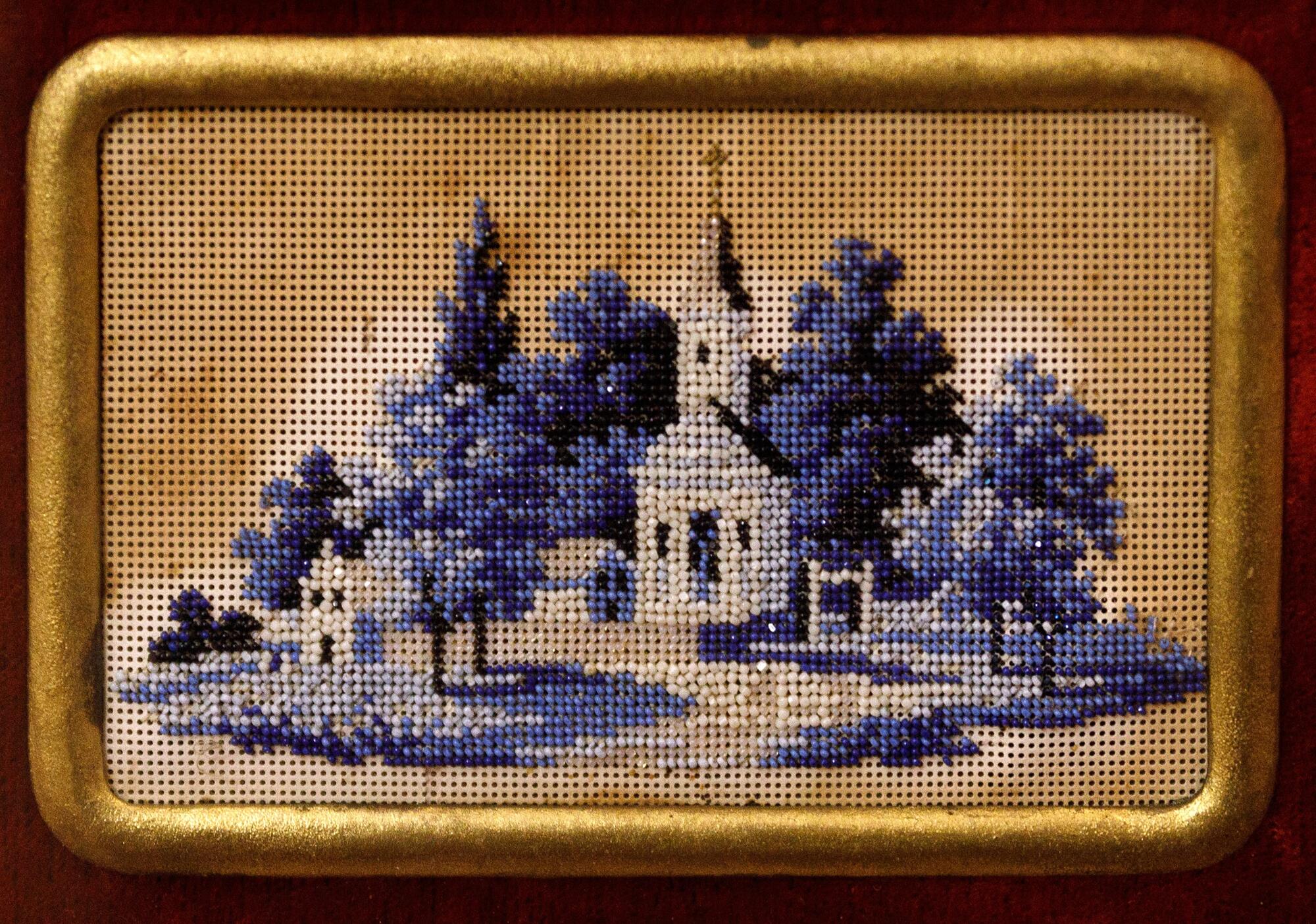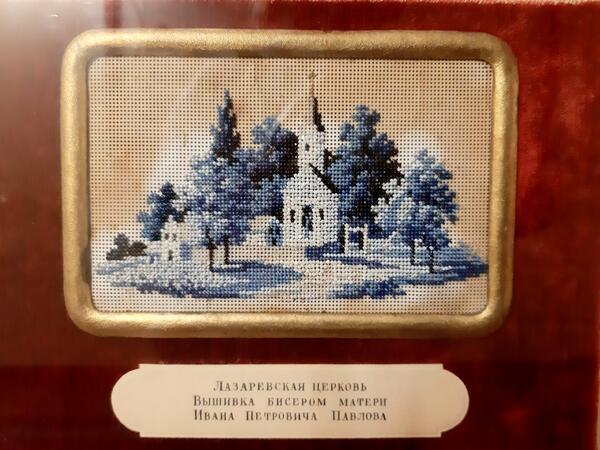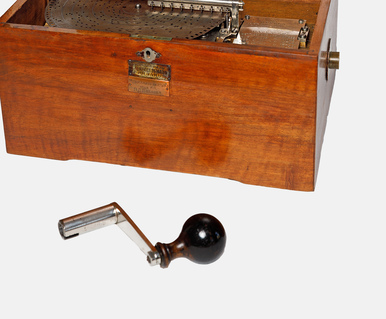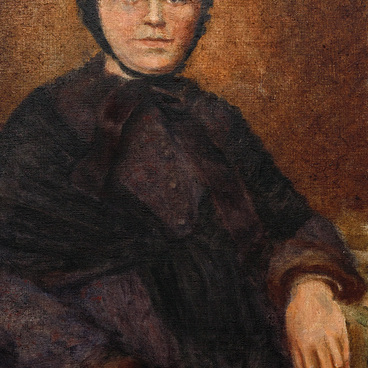Ivan Petrovich Pavlov was the eldest child and was always willing to help his mother whom he loved dearly. Varvara Ivanovna Pavlova gave birth to ten children, of whom only five survived. Ivan took on any chores, including bringing water, chopping wood, starting the stove, and looking after his younger siblings. Later, he wrote,
Saint Lazarus Church
Время создания
the 19th century
Место создания
Ryazan, the Russian Empire
Размер
10x16 cm
Техника
embroidery, seed beads, fabric
Коллекция
Выставка
0
Открыть в приложении #6
#16
I had a gentle mother who deserved my deepest and boundless love.
#11
When she was not taking care of her children and husband, Varvara Pavlova dedicated all her free time to arts and crafts. She was great at knitting, sewing, and embroidery. In the evening, when the whole family gathered in the living room, Varvara Pavlova sat in an armchair and engaged in her favorite pastime. This beaded view of the Saint Lazarus Church is one of her works. From 1868 until the end of his life, her husband Pyotr Dmitriyevich served in the Saint Lazarus Church. After his death, his son Sergey followed in his footsteps. The Saint Lazarus Church has not survived to this day, and Varvara and Pyotr Pavlov were buried at the Saint Lazarus cemetery.
The image is embroidered with small dark and light blue beads. In the 19th century, craftswomen often used beads for embroidery, as well as freshwater and saltwater pearls. For one image, they used between 15 and 35 shades of beads, which remain bright for centuries. Handkerchiefs were embroidered with beads and decorated with monograms. Women carried elegant beaded handbags on special occasions and gave them to each other as a present. Jewelry boxes, book bindings, and belts were decorated with bead embroidery, while beaded wires were used to make openwork trays.
In her room, Varvara Pavlova had a box on a chest of drawers where she kept all the handicraft accessories: threads, beads, needles, hooks, awls, buttons, and scissors of various sizes. The wooden box had six drawers decorated with decoupage summer landscapes.
19th-century craftswomen often used white yarn for knitting, despite its apparent impracticality. A good housekeeper also had her bedspreads, tablecloths, bedskirts, and towels impeccably clean and decorated with unique complex patterns. Nowadays, the room of the scientist’s mother Varvara Pavlova in the Ivan Pavlov Estate Museum has a bed covered with a snow-white bedspread. Like the embroidered view of the Saint Lazarus Church, it was also created by the lady of the house, preserved by family members, and donated to the museum.
The image is embroidered with small dark and light blue beads. In the 19th century, craftswomen often used beads for embroidery, as well as freshwater and saltwater pearls. For one image, they used between 15 and 35 shades of beads, which remain bright for centuries. Handkerchiefs were embroidered with beads and decorated with monograms. Women carried elegant beaded handbags on special occasions and gave them to each other as a present. Jewelry boxes, book bindings, and belts were decorated with bead embroidery, while beaded wires were used to make openwork trays.
In her room, Varvara Pavlova had a box on a chest of drawers where she kept all the handicraft accessories: threads, beads, needles, hooks, awls, buttons, and scissors of various sizes. The wooden box had six drawers decorated with decoupage summer landscapes.
19th-century craftswomen often used white yarn for knitting, despite its apparent impracticality. A good housekeeper also had her bedspreads, tablecloths, bedskirts, and towels impeccably clean and decorated with unique complex patterns. Nowadays, the room of the scientist’s mother Varvara Pavlova in the Ivan Pavlov Estate Museum has a bed covered with a snow-white bedspread. Like the embroidered view of the Saint Lazarus Church, it was also created by the lady of the house, preserved by family members, and donated to the museum.
#7
Ministry of Culture of the Russian Federation
читать дальшескрыть
00:00
00:00
1x
Saint Lazarus Church
Время создания
the 19th century
Место создания
Ryazan, the Russian Empire
Размер
10x16 cm
Техника
embroidery, seed beads, fabric
Коллекция
Выставка
0
Открыть в приложении
Поделиться



